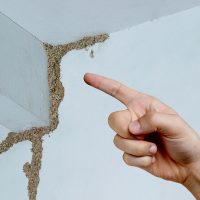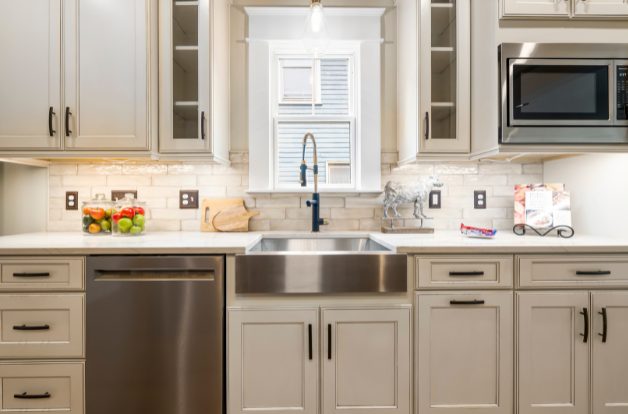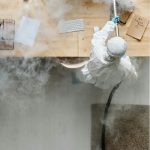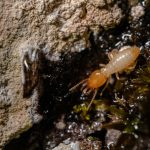Fumigation, a highly effective method, is one of the most crucial ways to get rid of bugs in the kitchen cabinets. It eliminates persistent insects that infest food and storage spaces in your home, providing a reliable solution to your pest problems.
In Singapore’s tropical climate, pests such as ants, roaches, and termites thrive and often find refuge in the dark, warm crevices of your cabinets. This common pest infestation necessitates fumigation as a crucial and effective solution that kills these insects and prevents their return.
Therefore, in this post, we’ll explore how to carry out the fumigation process to safely and effectively get rid of bugs in the kitchen cabinets.
Pre-Fumigation Preparation
Pre-fumigation preparation is not just a step, but a crucial part of the process. It plays a significant role in ensuring that the fumigation process is not only practical but also safe for your home. Therefore, prepare for fumigation by:
- Clearing the cabinets: The preparation begins with removing the contents of your cabinets, from pots and pans to utensils. Then, you need to pack non-perishables in containers and move them to a fumigation-inaccessible area.
- Cleaning: Ensure the cabinets are cleaned appropriately to eliminate crumbs, grease, and dust. You need to clean to remove anything that can attract pests after fumigation or serve as a hiding place for pests during fumigation. Mainly, clean the crevice, hinge space, and edges where the insects hide.
- Ventilate the house: Open other doors and windows, but keep the kitchen door closed when fumigating to trap the fumes within.
Step-by-Step Fumigation Process to Get Rid of Bugs in the Kitchen Cabinets
1. Fumigant Spray
Spray fumigant on household pests according to the manufacturer’s instructions. Alternatively, dust an even coat over interior cabinets, shelves, and the tops of drawers. In heavy infestations, use a NEA-approved fumigator who can easily treat hard-to-reach areas.
2. Sealing and Hold Time
Sealing the kitchen and cabinet tightly following treatment and allowing the fumigant to remain undisturbed is not just a step, but a crucial part of the process. This hold time is essential to ensure that the vapors stay long enough to pass through pest refuges and kill colonies.
3. Ventilation
Vent the kitchen hours before using. Open doors and windows once the exposure time is exhausted to eliminate the fumes. Position fans in a manner that allows for forced flow and makes the process easier.
Safety Precautions During Fumigation
Fumigation is a chemical treatment that can be hazardous if not conducted under controlled conditions. To ensure your safety and the safety of your home, it’s crucial to follow safety precautions, such as wearing rubber gloves, a face mask, and protective overalls.
Importantly, you need to turn off gas valves and smoke alarms further to ensure your safety during fumigation.
Also, seal off the kitchen using warning signs or barrier tape to ensure fumigation is out of reach for unauthorized persons.
Notably, it’s crucial to use only fumigants approved by NEA. These fumigants have been tested and approved for use in Singapore, ensuring they are safe and effective.
Cleaning After Fumigation to Fully Get Rid of Bugs in the Kitchen Cabinets
Once the fumigant has dried, vacuum or sweep the surfaces. Clean interior cabinet, shelf, and drawer components with vinegar to remove chemical residues and disrupt pest trails. Importantly, clean bare items or utensils for reuse.
Also, inspect the cabinets for signs of pest infestation, such as eggs or droppings. If the pests re-infest, repeat the treatment exercise or have a pest control operator return.
Preventing Future Infestations
Pest infestation prevention is crucial to ensure that pests never return. Mainly, you can keep pests away by simply covering dishes, washing cabinets immediately if there is spilling, and never allowing dirty dishes to remain in the sink overnight.
Additionally, seal any cracks and caulk where the cabinets are installed to prevent pests from being attracted to the openings.
Importantly, it’s essential to be proactive in preventing future infestations by hiring a pest control technician to visit your home annually and inspect it for signs of potential infestations.
Conclusion
While fumigating cabinets in the kitchen is a delicate and time-consuming task, it’s essential to ensure you have a pest-free kitchen.
Notably, although minor infestations can often be managed at home, more severe infestations require professional care. Therefore, if you notice heavy pest infestation, scheduling a call with a leading pest control service company at your convenience is the best decision.
The pest control company will offer professional kitchen fumigation services using safe-for-use-in-a-kitchen pest control treatments.








































